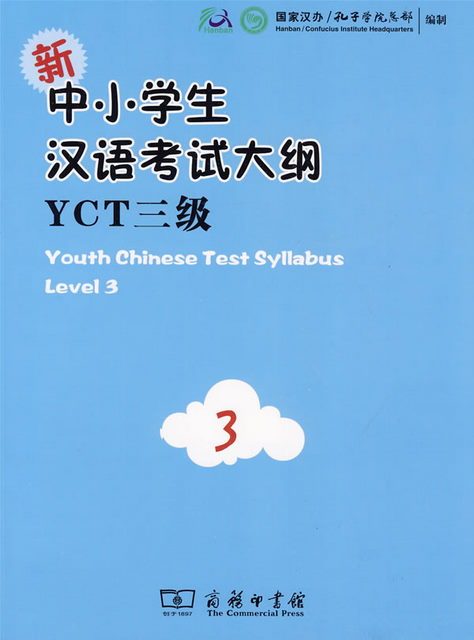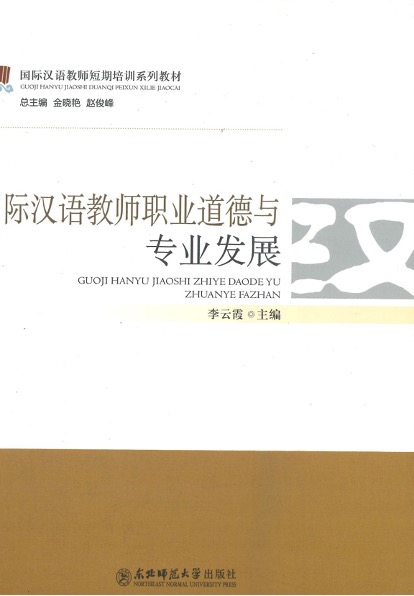《国际汉语教师短期培训系列教材 国际汉语教师职业道德与专业发展》以汉语教师为中心,着重介绍在国际汉语教育大发展的背景下,国际汉语教师应该具备的基本素质。《国际汉语教师短期培训系列教材 国际汉语教师职业道德与专业发展》共分四章。章主要讨论教师职业道德第二章是教师心理素质第三章是教师教育素质第四章为教师专业发展总的来说,这是一本教师了解关于自身和学生的基本的入门教材。适用于准备参加国际汉语教师资格证书考试的学生、即将踏入汉语教师职业阶段的预备教师、刚人职的汉语教师、希望提升自己的教学理论水平的教师以及希望更多了解自己和学生的汉语教师。
The Chinese Language Teachers' Short-Term Training Series International Ethics and Professional Development for Chinese Language Teachers focuses on the basic qualities that international Chinese language teachers should possess in the context of the great development of international Chinese language education. The textbook is divided into four chapters. Chapter 2 focuses on the professional ethics of teachers Chapter 3 on the psychological qualities of teachers Chapter 4 on the professional development of teachers Overall, this is an introductory textbook for teachers to understand the basics about themselves and their students. It is suitable for students preparing for the International Chinese Language Teachers' Certificate Examination, preparatory teachers who are about to enter the Chinese language teaching profession, new Chinese language teachers, teachers who wish to improve their teaching theories, and Chinese language teachers who wish to learn more about themselves and their students
 新中小学生汉语考试(YCT)是一项国际汉语能力标准化考试,考查汉语非第一语言的中小学生日常生活和学习中运用汉语的能力。新YCT分笔试和口试两部分。笔试包括YCT(一级)、YCT(二级)、YCT(三级)、YCT(四级);口试包括YCT(初级)和YCT(中级)。 YCT(三级)考查考生的日常汉语应用能力,它对应于《国际汉语能力标准》二级、《欧洲语言共同参考柜架(CEF)》A2级。通过YCT(三级)的考生可以用汉语就熟悉的日常话题 进行简单而直接的交流,达到初级汉语优等水平。 The Youth Chinese Test (YCT) is an international standardised Chinese language proficiency test that tests the ability of primary and secondary school students whose Chinese is not their first language to use Chinese in their daily lives and studies. The new YCT has two parts: a written test and an oral test. The written test includes YCT (Level 1), YCT (Level 2), YCT (Level 3) and YCT (Level 4); the oral test includes YCT (Elementary) and YCT (Intermediate). YCT (Level 3) tests candidates' ability to use Chinese in everyday situations and corresponds to the International Chinese Language Proficiency Standard Level 2 and the Common European Framework of Reference for Languages (CEF) Level A2. Candidates who pass the YCT (Level 3) can communicate in Chinese in a simple and direct way on familiar everyday topics, and reach the level of primary Chinese proficiency.
新中小学生汉语考试(YCT)是一项国际汉语能力标准化考试,考查汉语非第一语言的中小学生日常生活和学习中运用汉语的能力。新YCT分笔试和口试两部分。笔试包括YCT(一级)、YCT(二级)、YCT(三级)、YCT(四级);口试包括YCT(初级)和YCT(中级)。 YCT(三级)考查考生的日常汉语应用能力,它对应于《国际汉语能力标准》二级、《欧洲语言共同参考柜架(CEF)》A2级。通过YCT(三级)的考生可以用汉语就熟悉的日常话题 进行简单而直接的交流,达到初级汉语优等水平。 The Youth Chinese Test (YCT) is an international standardised Chinese language proficiency test that tests the ability of primary and secondary school students whose Chinese is not their first language to use Chinese in their daily lives and studies. The new YCT has two parts: a written test and an oral test. The written test includes YCT (Level 1), YCT (Level 2), YCT (Level 3) and YCT (Level 4); the oral test includes YCT (Elementary) and YCT (Intermediate). YCT (Level 3) tests candidates' ability to use Chinese in everyday situations and corresponds to the International Chinese Language Proficiency Standard Level 2 and the Common European Framework of Reference for Languages (CEF) Level A2. Candidates who pass the YCT (Level 3) can communicate in Chinese in a simple and direct way on familiar everyday topics, and reach the level of primary Chinese proficiency. 《国际汉语教师短期培训系列教材 国际汉语教师职业道德与专业发展》以汉语教师为中心,着重介绍在国际汉语教育大发展的背景下,国际汉语教师应该具备的基本素质。《国际汉语教师短期培训系列教材 国际汉语教师职业道德与专业发展》共分四章。章主要讨论教师职业道德第二章是教师心理素质第三章是教师教育素质第四章为教师专业发展总的来说,这是一本教师了解关于自身和学生的基本的入门教材。适用于准备参加国际汉语教师资格证书考试的学生、即将踏入汉语教师职业阶段的预备教师、刚人职的汉语教师、希望提升自己的教学理论水平的教师以及希望更多了解自己和学生的汉语教师。 The Chinese Language Teachers' Short-Term Training Series International Ethics and Professional Development for Chinese Language Teachers focuses on the basic qualities that international Chinese language teachers should possess in the context of the great development of international Chinese language education. The textbook is divided into four chapters. Chapter 2 focuses on the professional ethics of teachers Chapter 3 on the psychological qualities of teachers Chapter 4 on the professional development of teachers Overall, this is an introductory textbook for teachers to understand the basics about themselves and their students. It is suitable for students preparing for the International Chinese Language Teachers' Certificate Examination, preparatory teachers who are about to enter the Chinese language teaching profession, new Chinese language teachers, teachers who wish to improve their teaching theories, and Chinese language teachers who wish to learn more about themselves and their students
《国际汉语教师短期培训系列教材 国际汉语教师职业道德与专业发展》以汉语教师为中心,着重介绍在国际汉语教育大发展的背景下,国际汉语教师应该具备的基本素质。《国际汉语教师短期培训系列教材 国际汉语教师职业道德与专业发展》共分四章。章主要讨论教师职业道德第二章是教师心理素质第三章是教师教育素质第四章为教师专业发展总的来说,这是一本教师了解关于自身和学生的基本的入门教材。适用于准备参加国际汉语教师资格证书考试的学生、即将踏入汉语教师职业阶段的预备教师、刚人职的汉语教师、希望提升自己的教学理论水平的教师以及希望更多了解自己和学生的汉语教师。 The Chinese Language Teachers' Short-Term Training Series International Ethics and Professional Development for Chinese Language Teachers focuses on the basic qualities that international Chinese language teachers should possess in the context of the great development of international Chinese language education. The textbook is divided into four chapters. Chapter 2 focuses on the professional ethics of teachers Chapter 3 on the psychological qualities of teachers Chapter 4 on the professional development of teachers Overall, this is an introductory textbook for teachers to understand the basics about themselves and their students. It is suitable for students preparing for the International Chinese Language Teachers' Certificate Examination, preparatory teachers who are about to enter the Chinese language teaching profession, new Chinese language teachers, teachers who wish to improve their teaching theories, and Chinese language teachers who wish to learn more about themselves and their students